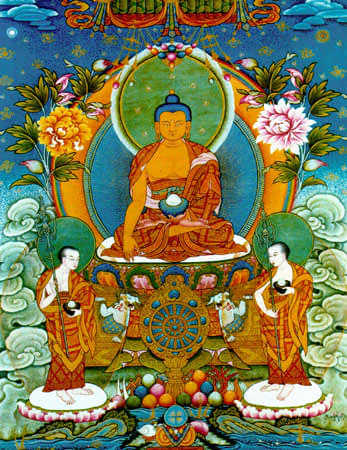Library - Tengyur - Comments on tantras

sīta-tārā-sādhana
White Tara practice
I prostrate before the noble Tara!
In accordance with what [explained] earlier, [perform meditation] on emptiness and so forth. Then from the suṁ syllable that has become perfect [appears] Meru, who possesses the nature of the various jewels. From above from the syllable paṁ [appears] the white lotus. From above from the syllable [appears] the disk of the moon. On it from the white syllable hūṁ that has become perfect [appears] the Blessed White Tara, with three eyes, four arms, possessing on her head the adornment of the five Tathāgatas. Adorned with multicolored ornaments. With two hands she makes the mudra utpala. With the right hand [makes the mudra] of bestowing the highest, really possessing [while holding in her hand] the wish-fulfillment jewel. With this he realizes the complete completion of the thoughts of all living beings. In his left hand he holds a bundle of utpala. Visualize it like this.
To her right [appears] Marichi. With a body of yellow color, she is on the disk of the moon. Possesses blue clothes and two arms. In her left hand she holds a branch of the red ashoka tree. In the right hand she holds a white drum. The upper [part of the body] is adorned with red robes.
On the left side is Mahāmāyuri, green like the priyamku flower [priyaṁku], with two hands. In the left holds a feather from the tail of a peacock. In the right one holds a drum. When [there is] clarity in such aspects, [speak]:
oṁ bhagavati tāre ma ma hṛidayaṁ praviśa svāhā
Saying so, bestow blessings on yourself.
Then recite the mantra:
oṁ namo tāre mano hara hūṁ hara svāhā
Thus concludes the White Tara practice composed by Acharya Chintamani raja.
Translated by Lama Dhondup Dorje Tulku.


